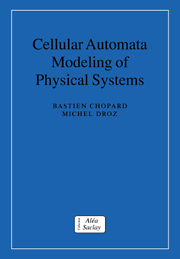6 - Nonequilibrium phase transitions
Published online by Cambridge University Press: 26 October 2009
Summary
Introduction
The concept of phase transition plays a very important role in many domains of physics, chemistry, living matter and biology. The simplest case is the one in which a phase transition arises between two equilibrium states when varying a control parameter. Examples of control parameters are temperature, pressure or and concentration. The most familiar phase transitions are the paramagnetic—ferromagnetic transition, the liquid—gas transition and the supraconducting—normal phase transition in a metal. Equilibrium statistical mechanics gives a coherent description of the physics of these states. The determination of the presence of a phase transition and the study of its properties is not generally an easy problem, however there exists a well-defined framework to approach it. When, at the transition some quantities have a discontinuity, one speaks of a first-order phase transition. If the physical quantities vary continuously one speaks of second-order phase transitions. This latter case is particularly tricky because one has to face a multiscale problem. Fluctuations of all wavelengths (from a few angström to the size of the system) play an equivalent important role at the transition. However, even in these complicated situations, such tools as the renormalization group method have been developed to solve these problems. Although several analytical methods exist in equilibrium statistical mechanics, one often has to have recourse to numerical simulations. In particular, the Monte-Carlo method is widely used. As we have seen in chapter 2, Monte-Carlo algorithms can be viewed as probabilistic cellular automata providing that some care is taken with the evolution rules (checkerboard invariants).
- Type
- Chapter
- Information
- Cellular Automata Modeling of Physical Systems , pp. 232 - 255Publisher: Cambridge University PressPrint publication year: 1998



